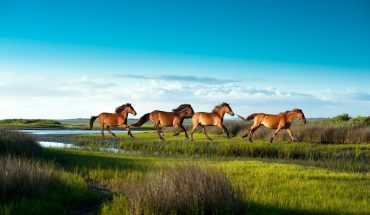by Ann Brooke Raynal
photographs by Jason Dail
Growing up in Greene County, Darrell Dail, 79, watched his father Frank make homemade scuppernong wine. The family’s grapes came from vines grown with cuttings from Dail’s mother’s family farm in Pitt County.
“My father would mash the grapes and cover the wooden tub with a cheese cloth,” Dail says. A lifetime of travel and wine tasting has rendered the scuppernong wine too sweet for Dail’s palate, but he still makes wine the way his father used to, in small batches of six to seven gallons, to enjoy with friends and family.
Dail’s vintages have impressed a larger audience as well. He has won blue ribbons at the North Carolina State Fair every year since 1997. Last year, he took home several ribbons, including a blue ribbon for his peach ice wine. Since 2007, Dail has also entered the WineMaker Magazine international amateur competition each year, and his wines have won gold, silver or bronze every time. This year, out of five entries, he took home four medals; two silver and two gold for his 2011 sauvingon blanc semillon and his 2011 Portuguese douro tinto.
Dail’s time for wine came after a long career in the agrichemical business. He studied agricultural economics at N.C. State, and though his career took him all over the country, he says he always knew he’d find his way back to North Carolina. He was so sure of this ambition that he purchased four seats in the newly constructed Carter-Finley Stadium in 1966. The seats are good, to say the least, and now that he and his wife, Gladys, have retired to North Carolina, they can actually use them. And they do: Dail is also the president of State’s “Forever Club,” a group of alumni who graduated more than 50 years ago.
He started making wine the same year he bought those seats. Three years later, he put a wine cellar and small “factory” room (where he produces, bottles and even affixes labels) into the North Raleigh house he and Gladys built in 1999.
Armed with an understanding of the chemistry involved, Dail is able to control sugar and alcohol content and length of fermentation. Dail uses North Carolina-grown grapes as much as possible, but he also sends away (to Australia, South Africa, Italy, Chile and other wine-growing countries throughout the world) for the mashed grapes, called the “crush.”
In the crushing process, stems are removed, but the skins are kept. The skins are especially useful for making red wines. Dail studies the soil, climate, and major weather events in the regions from which he imports the crush. “Harvest season and hurricane season often overlap, so I am always watching the weather, trying to predict which years from which regions will be the best,” says Dail. Once he has the crush, he can make wine at any time. Many people think wine can only be made at harvest time. “Even commercial operations can’t make all their wine at one time,” Dail says. “With the right facilities, you can hold the crush indefinitely.”
In the last four years, Dail says he’s become more adept at blending the best characteristics of one wine with another. He also experiments with flavorings. Dial’s peach apricot chardonnay is a favorite with Gladys, and neighbors go nuts for his orange chocolate port. Every winter the couple hosts a tasting party for friends and family. Wines for sampling are set up at stations, and guests are encouraged to rate the wine and leave comments. “Our friends are our focus group and our best taste testers,” Dail explains.
Friends are shameless about bringing Dail’s wine bottles back for recycling. “They always ask when they can take the bottles home again. And what they mean is, they want them filled back up!”




